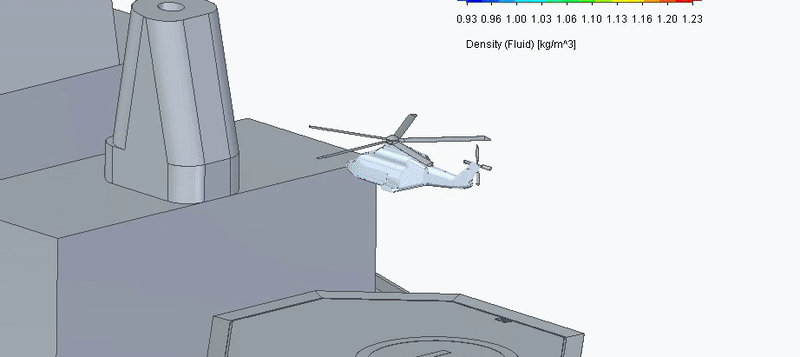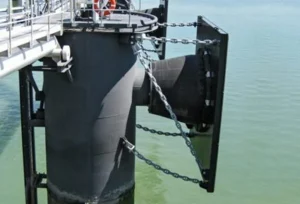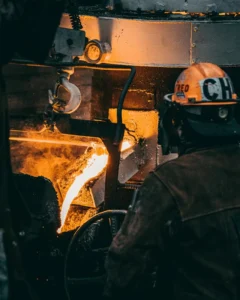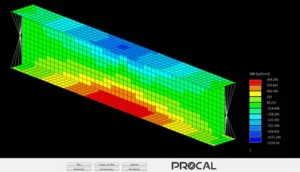Introduction
Offshore oil exploration and production operations require transportation by rotary-wing aircraft. The most critical phase in the operation of these aircraft is landing on offshore vessels. For this type of operation, when the helideck is located at the stern, close to the heated air outlet of the vessel's propulsion engines, lift is reduced.
In the case of FPSO(Floating Production Storage and Offloading) type production platforms, the structures on the deck(topside) are made up of various modules, such as compressors, pumps, generators and other equipment needed for the process. The forced air outlets of the equipment near the heliport are sources of turbulence that can impact aircraft operations.
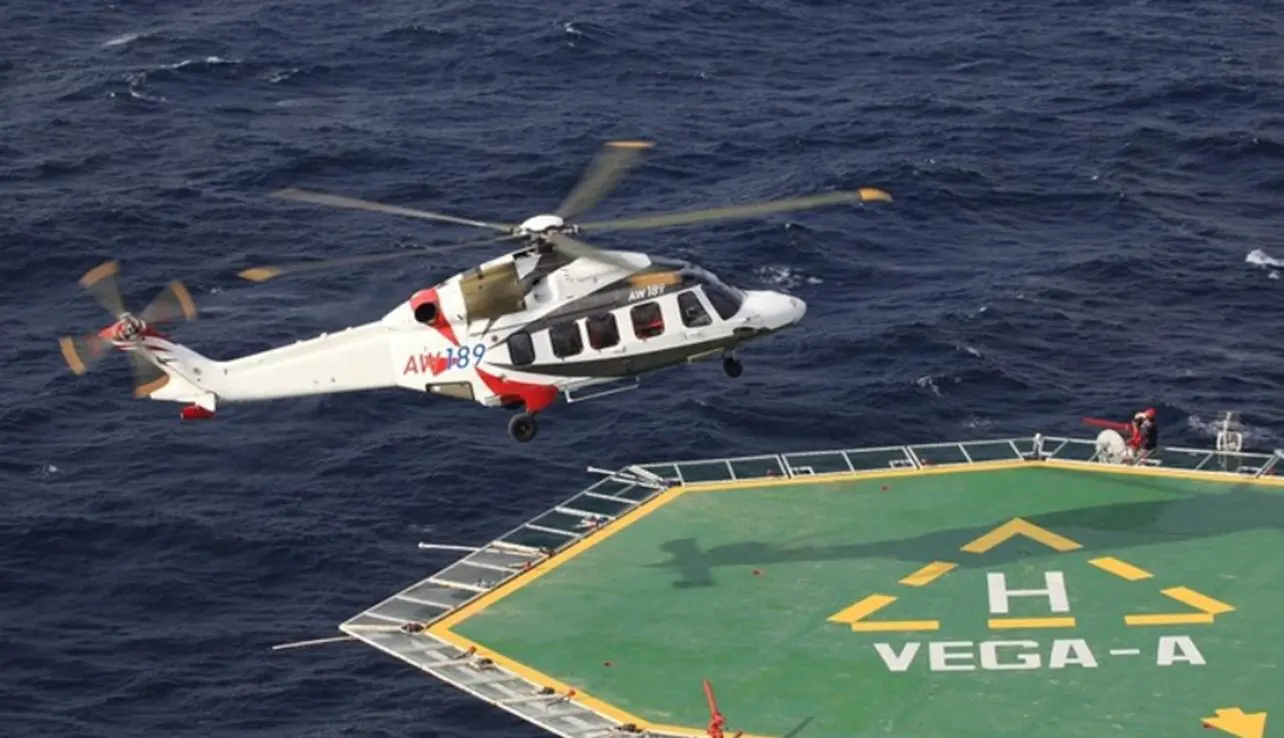
Figure 1: Offshore landing operation of AW189 aircraft.
Landing on platforms involves a number of stages, such as an overflight to identify and visually confirm the destination platform, and then entering at the end of the landing. On this journey, the pilot adjusts the aircraft to the existing turbulence conditions, but the conditions near the helideck can be different, which requires a specific study, as required by NORMAM-223/DPC.
This article presents a study of the wind environment on a helideck using CFD (Computational Fluid Dynamics)This article presents a study of the wind environment on a helideck using CFD (Computational Fluid Dynamics), considering the outflow of gases from a chimney and its influence on the lift of an Agusta Westland AW189 aircraft. From the field of velocity vectors calculated in the simulations, helicopter pilots have valuable information about the conditions, helping to guide approach and landing operations.
Study model
In this specific example, the vessel's engine exhaust stack is located close to the helideck. Although it is not recommended to position exhaust fumes close to the helideck, this situation is still found on offshore exploration vessels.
In addition to the discharge of gases, another important aspect is the interference of the structures on the ship's deck in the flow that reaches the helideck. The relative wind is subject to the effect of the roughness of these structures, forming vortices that can cause turbulence for helicopters. In this study, the interference of the ship's tower was considered.
The CFD model representing the landing operation, considering the offshore vessel with a helideck at the stern, was built to represent the flow field, including the influence of the hull.
In order to create a computationally viable model, various degrees of refinement were defined for the finite volume mesh.
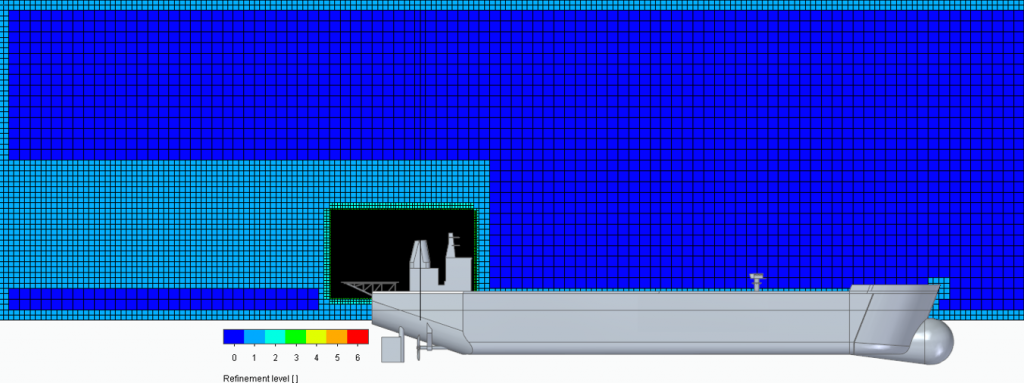
Figure 2: CFD model for determining the wind environment on a helideck located on the bow of an offshore vessel.
The flow in the helideck is influenced by various conditions, such as the flow rate and temperature of the gases exiting the chimney, the relative speed of the vessel and the height of the helicopter in relation to the offshore vessel. The study must be carried out for a variation in wind angle in order to determine the typical conditions to be faced during landing operations.
For certain conditions of relative wind and gas flow in the chimney, there is a strong influence in the helideck region. The typical appearance of the flow in the helideck region for a relative headwind can be seen in the figure below.
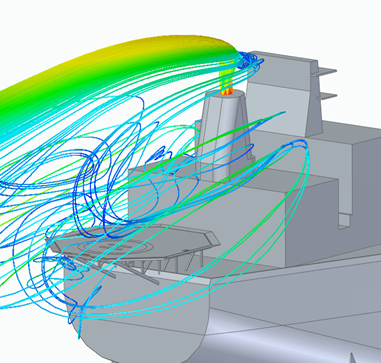
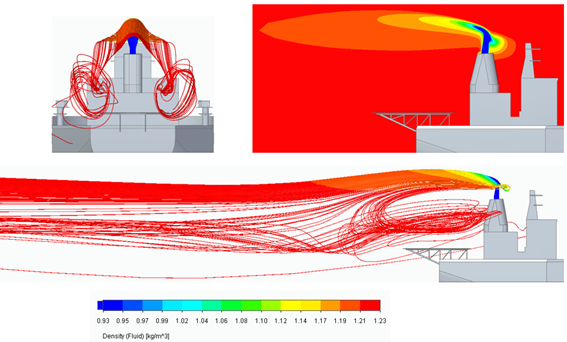
Figure 3: Air density and current lines - CFD simulation to visualize the flow field in the helideck under the influence of engine exhaust - headwind.
The results show a downward air current over the helideck, with the formation of two vortices on the port and starboard sides.
The existence of the helicopter generating lift over the helideck has a significant effect on the air flow at the stern of the vessel. In order to study the influence of the helicopter, a permanent condition of hovering flight over the helideck was simulated.
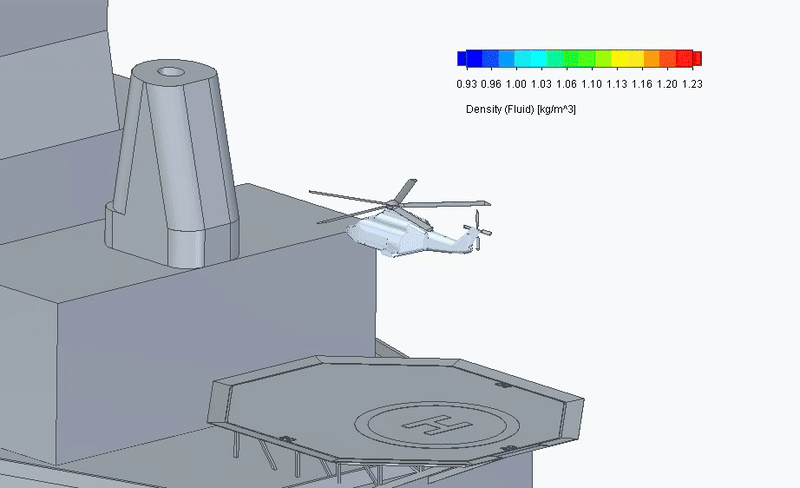
Gif 1: Simulation with AW189 helicopter hovering over the helideck.
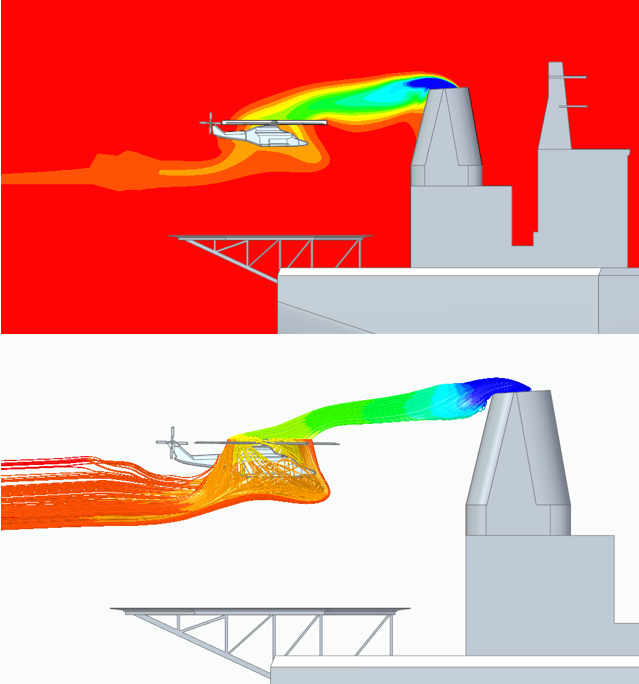
Figure 4: Simulation with AW189 helicopter hovering over the helideck - note the suction of heated gases from the chimney, resulting in a loss of lift.
The flow from the exhaust gases is altered by the helicopter's main rotor, which has a suction effect and results in a loss of lift. Another effect is related to the loss of engine efficiency through the suction of heated air with a lower density. To avoid or minimize the impact of these effects on the landing operation, deflectors can be installed to raise the height of the chimney.
A higher flow rate or exit velocity of the gases in the chimney also has the same effect, as it increases the inertia of the exhaust flow. However, the pressure drop in the exhaust increases under these conditions, which can have an impact on machine operation.
Final considerations
By analyzing the flow in the helideck region, pilots are able to visualize typical conditions, allowing for better planning of the final approach for landing and ensuring greater safety in operations.
The influence of exhaust gases on aircraft lift is significant and should be avoided by distancing the exhaust ducts from the helideck area.
Loss of control or trajectory is responsible for around 15% of offshore aircraft accidents. By understanding the turbulence parameters encountered in each specific operation through CFD studies, new accidents can be avoided.
Kot Engenharia has the experience and resources needed to carry out CFD simulations of offshore heliports. Contact our team for more information!
Follow our pages on LinkedIn, Facebook e Instagram to keep up with our content.
